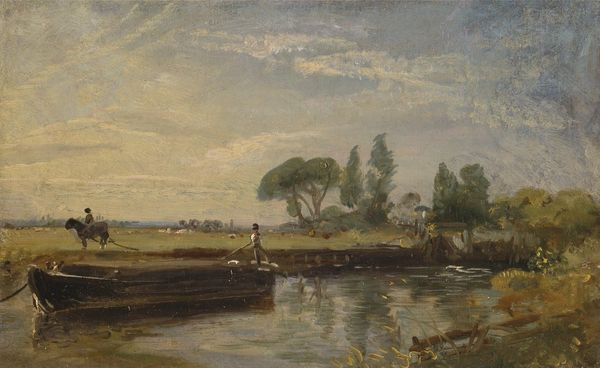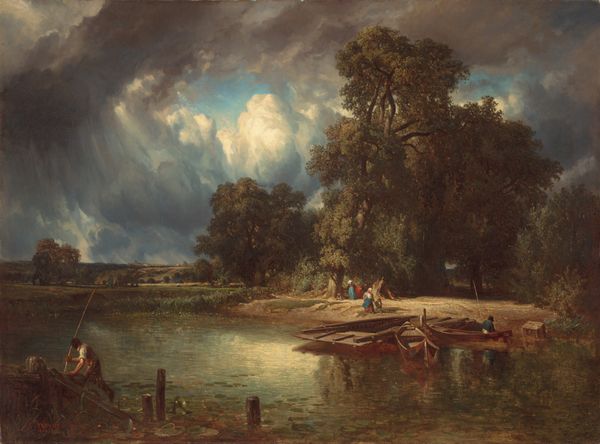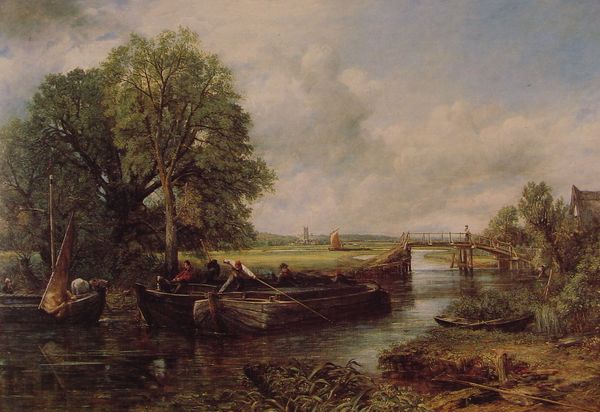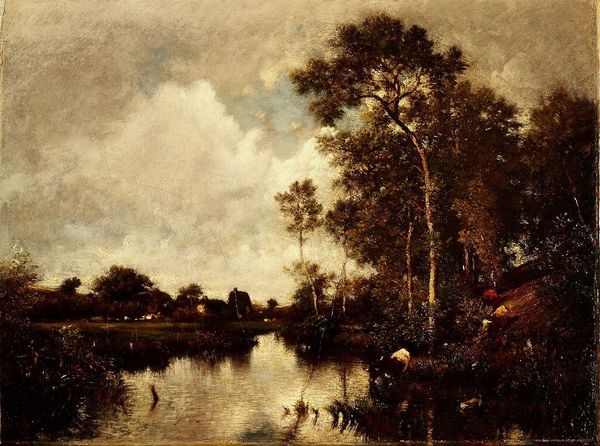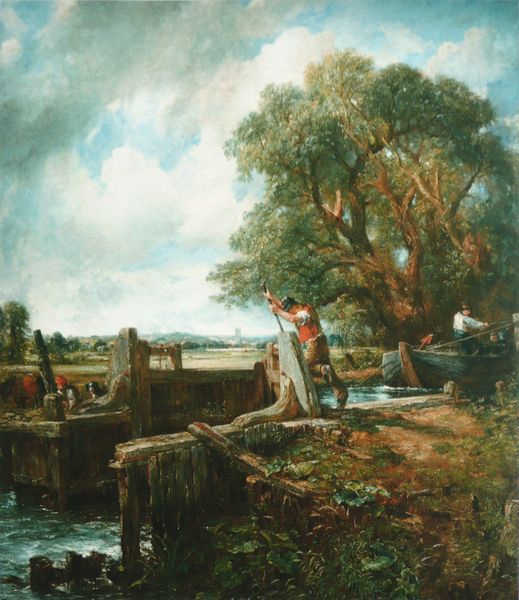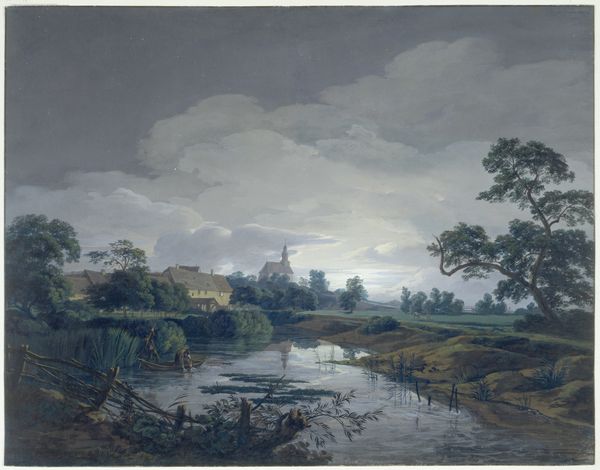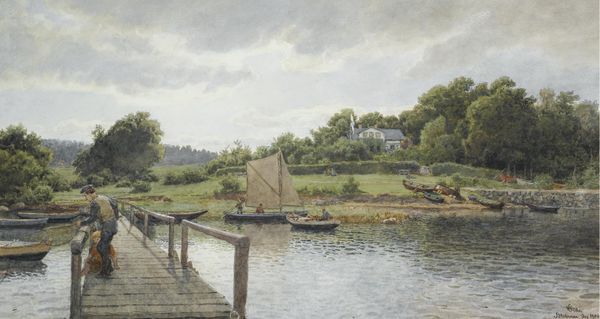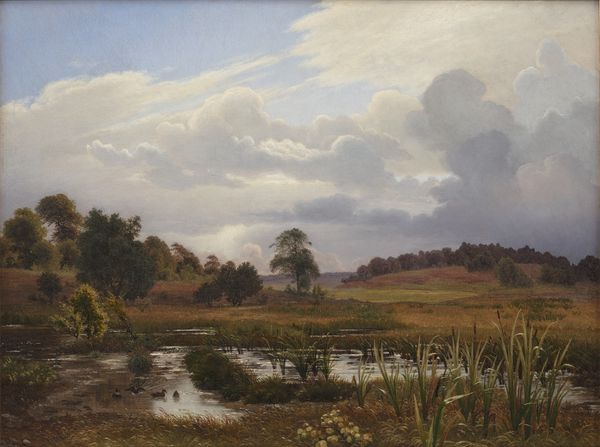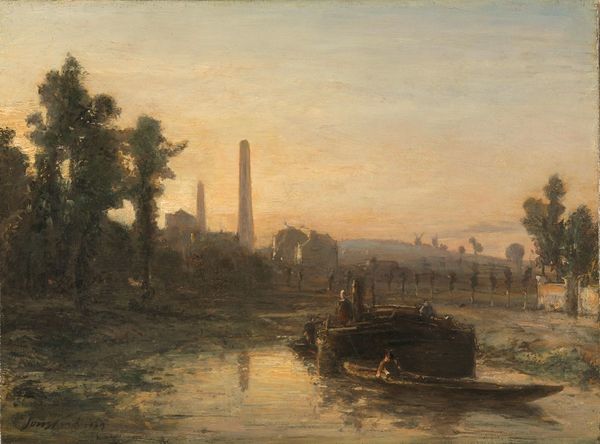
Copyright: Public domain
Editor: So this is Jasper Francis Cropsey’s “Walton on Thames,” painted in 1860. The scene has a somewhat melancholy feel, despite the brightness, and almost tells a story. What stands out to you? Curator: The Thames itself becomes a profound symbol, doesn't it? More than just a geographical feature. The river here acts as a kind of mirror reflecting the fleeting nature of time and empire, and a potential divide between what is known versus what is being explored, what could become known. Editor: A mirror? Curator: Yes, see how the sky mirrors the water... Consider the inclusion of the bridge, a significant symbol in art. Bridges traditionally represent connection, transition, or a pathway between two states of being, in this case bridging not just physical space but perhaps cultural ideas. Then there is the subtle, but noticeable arc across the top left in the sky. It looks almost man-made as the angle cuts low into the land. Almost as if there's construction beyond our viewing abilities. Editor: I can see that now! Almost an implied change to the physical land. Curator: And think about the rainbow, or what looks like a faint rainbow... traditionally it's a symbol of hope and promise. Its diminished presence, however, casts a shadow of doubt. The rainbow's symbolism could suggest the fragility of these optimistic ideals. Does Cropsey hint at societal anxieties beneath the surface? The Thames, the bridge, the rainbow… they all speak volumes. Editor: I never considered the emotional impact of the bridge and even that shadow across the landscape, the construction looming in the clouds. All this adds to the mood and context! Curator: Precisely. Each visual element is imbued with historical, emotional and symbolic weight, reflecting cultural anxieties and the ever-changing landscape of the era. Hopefully that's now clearer for you too!
Comments
No comments
Be the first to comment and join the conversation on the ultimate creative platform.
